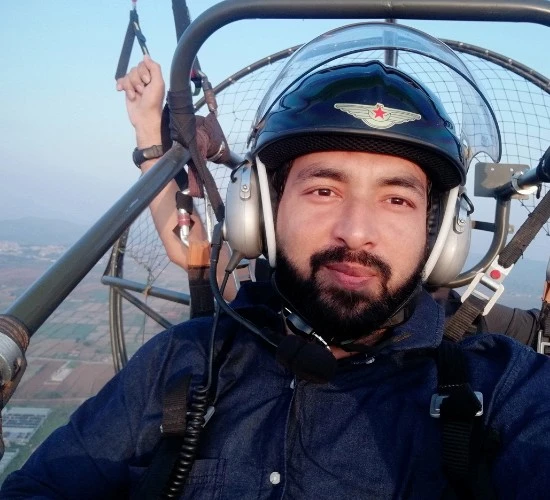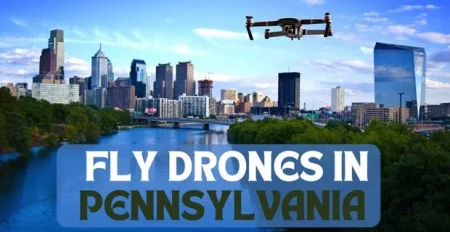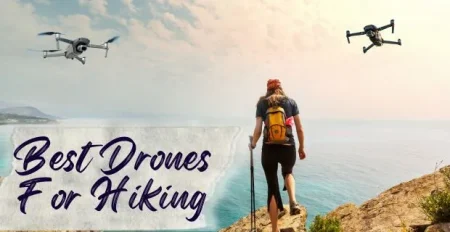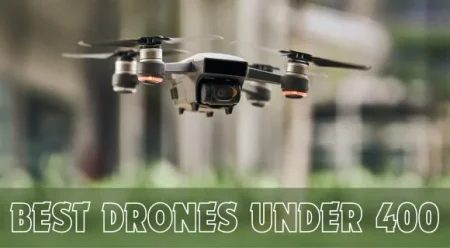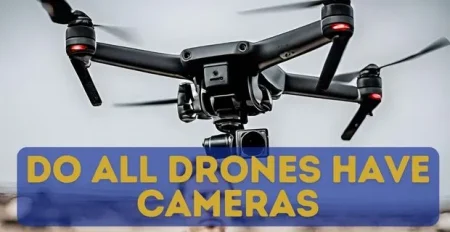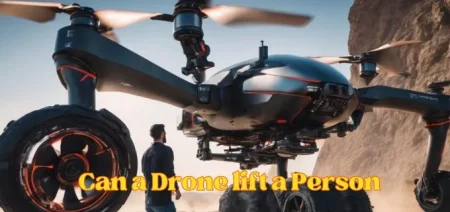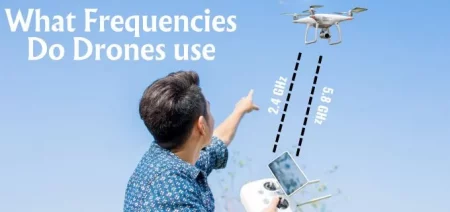
Drones have become increasingly popular in recent years, and their use has expanded from military and commercial applications to a wide range of personal and recreational uses. While many enjoy flying drones for fun or as a hobby, their increasing popularity has also raised concerns about privacy, safety, and security.
How to Legally Take Down A Drone
Some drones are equipped with high-resolution cameras and can be used to capture aerial footage of the private property, potentially violating people’s privacy.
Drones can also be a safety hazard, as they can crash into buildings, trees, or even people, causing severe injuries. Moreover, drones can smuggle contraband or conduct espionage, raising serious security concerns.
As a result, there has been a growing interest in how to legally take down a drone that poses a threat or causes harm.
This article will explore the laws and regulations surrounding drone use and discuss the various legal methods for taking down a drone.
We will also discuss the risks and consequences of taking down a drone and how to stay safe and legal when dealing with these increasingly popular flying machines.
Understanding the Laws and Regulations
Before we dive into the various methods for taking down a drone, it’s essential to understand the laws and regulations governing their use. In the United States, the operation of drones is subject to regulation by the Federal Aviation Administration (FAA).
As per federal law under Title 18 US Code 32, destroying an aircraft is considered a serious offence. It is important to note that the Federal Aviation Administration (FAA) categorizes all types of drones as “aircraft,” which means that even those who fly drones for recreational purposes must comply with the FAA’s regulations when operating in uncontrolled airspace.
Rules and guidelines have been established for both commercial and recreational use of drones:
- According to the FAA, drones must be flown below 400 feet in altitude and kept within the pilot’s line of sight.
- Drones must also be registered with the FAA, and the pilot must have a remote pilot certificate if the drone is used for commercial purposes.
- Apart from federal regulations, drone usage may also be subject to state and local laws.
Certain states have introduced drone regulations that can be more stringent compared to federal rules. For example, some states have banned using drones in certain areas, such as schools, prisons, or critical infrastructure.
Reasons for Taking Down a Drone
While many people enjoy flying drones safely and responsibly, there are situations where taking down a drone may be necessary. Some common reasons for taking down a drone include the following:
Invasion of privacy:
If a drone is flying over private property without the owner’s permission or is equipped with a camera and filming people without their consent, it may be appropriate to take it down.
Safety concerns:
Drones can be a safety hazard if they are flown recklessly or if they malfunction and crash. If a drone is flying in a crowded area or threatens people or property, it may be necessary to take it down.
Security risks:
Drones can be used for illegal purposes, including smuggling contraband and conducting espionage. If a drone is suspected of being used for illegal activity, it may be appropriate to take it down.
Non-Legal Methods for Taking Down a Drone
Before resorting to legal methods for bringing down a drone, some non-legal methods can be used to bring a drone down safely. These methods include:
Throwing objects:
A well-aimed object, such as a ball or frisbee, can knock a drone out of the sky if thrown with enough force.
Disrupting the Drone’s Communication
Disrupting communication is one of the easiest and most effective ways to take down a drone. Most drones use wireless communication protocols such as Wi-Fi, Bluetooth, or radio waves.
Jamming the drone’s communication signals can cause it to lose control, and the operator will not be able to fly it. However, it’s important to note that disrupting the drone’s communication may also interfere with other nearby wireless devices.
Using Anti-Drone Technology
Anti-drone technology is becoming increasingly popular, and several options are available. These devices use radio frequency (RF) and GPS jamming to disable a drone’s communication signals and tracking system. Other technologies, such as acoustic systems or lasers, can also disorient a drone and force it to land.
Using a net:
Some companies have developed specialized nets that can be fired at a drone to capture it in mid-air. Using physical methods to take down a drone should be a last resort and only be used in situations where it’s legal and safe.
Net guns can capture a drone mid-air and bring it to the ground without damaging it. Other physical methods may include using drones with nets, water cannons, or other tools to disable or bring the drone down safely.
Using water:
A hose or water gun can spray a drone and cause it to malfunction or crash.
However, it’s important to note that using these methods to take down a drone may be illegal and could result in charges of vandalism or destruction of property.
Therefore, it’s essential to understand the legal methods for taking down a drone and to use them when appropriate.
How to take down a drone legally
If non-legal methods for taking down a drone are not feasible or appropriate, legal methods can be used to take down a drone. These methods include:
Ask Drone Pilot to Stop Flying:
If you see a drone flying around you, you can ask the pilot to stop flying. It is also possible that the drone may fly out of range, making it difficult to identify the owner or operator.
If it is not the case and the drone pilot disregards your request to cease flying, you may consider using signs to indicate that your property is a no-fly zone for drones. It will help deter drone pilots from flying over your property.
If the drone pilot continues to fly over your property despite your signs, you can file a complaint with the FAA (Federal Aviation Administration) or local law enforcement. Upon receiving your report, they will conduct an investigation and, if required, take appropriate action.
Filing a Complaint with the FAA
A complaint can be filed with the FAA if a drone is being flown illegally or recklessly. The FAA has a process for investigating complaints and acting against drone pilots who violate the rules.
To file a complaint with the FAA, visit their website or call their toll-free hotline.
Seeking Help from Law Enforcement
If a drone is posing an immediate threat to people or property, law enforcement can be called to intervene. Law enforcement has the authority to take down the drone or detain the pilot based on the circumstances.
However, it’s important to note that law enforcement may not always have the resources or authority to take action against a drone.
How to disable a drone on your property to Mark it No Drone Zone
To prevent drones from flying over your property, you can use signs to indicate that it is a no-fly zone. You can easily obtain “No Drone Zone” signs from your local hardware store or purchase them online. You can discourage drone pilots from entering your property by displaying these signs.
These signs are designed to be highly visible and can be placed in your yard or on your fence.
If you want to make your own sign, you can use a simple design with bold letters that say “No Drones” or “Drone-Free Zone.”
While these signs may deter some drone pilots, they are not foolproof. Despite the presence of signs, some drone pilots may ignore them or argue that they were unaware of their existence.
Pursuing a Civil Action
A civil lawsuit may be appropriate if a drone has caused property damage or has violated privacy rights. A lawyer can help you pursue legal action against the drone pilot, seeking damages for any harm caused.

However, it’s important to note that pursuing a civil action can be expensive and time-consuming and may not always result in a favorable outcome.
When and How to Contact Law Enforcement
Taking down a drone is not always straightforward, and knowing when and how to contact law enforcement for assistance is essential. Here are three things to consider when contacting law enforcement:
Determining When to Contact Law Enforcement:
If a drone is flying over private property without permission or is interfering with air traffic, it may be necessary to contact law enforcement. If a drone threatens public safety or causes a disturbance, it is crucial to inform law enforcement immediately.
Preparing to Contact Law Enforcement:
Before contacting law enforcement, gathering evidence, such as pictures and videos of the drone and its behaviour, is important. This evidence can help law enforcement understand the situation and take appropriate action.
Coordinating with Law Enforcement:
When contacting law enforcement, provide as much information as possible about the drone’s location, altitude, and flight pattern. It is crucial to cooperate with law enforcement and follow their instructions carefully.
If the drone operator is located, law enforcement may take legal action against them, so avoiding any confrontations or actions considered vigilantism is important.
Conclusion:
It is crucial to comprehend the laws and regulations associated with drones use. Take necessary measures when needed, as their popularity continues to rise.
While non-legal methods for taking down a drone may be tempting, it’s important to remember that they can be illegal and may result in charges of vandalism or destruction of property.
Therefore, it’s crucial to use legal methods to take down a drone and stay safe and legal when dealing with these flying machines. By understanding the rules and regulations and following the appropriate steps, we can all enjoy the benefits of drones while minimizing the risks and potential harms.
